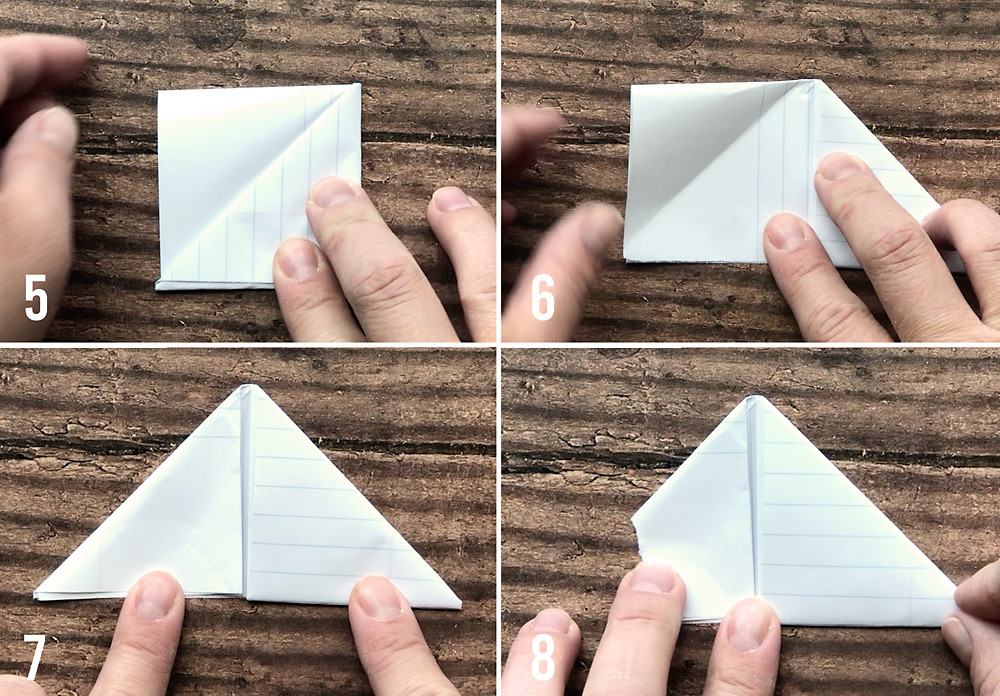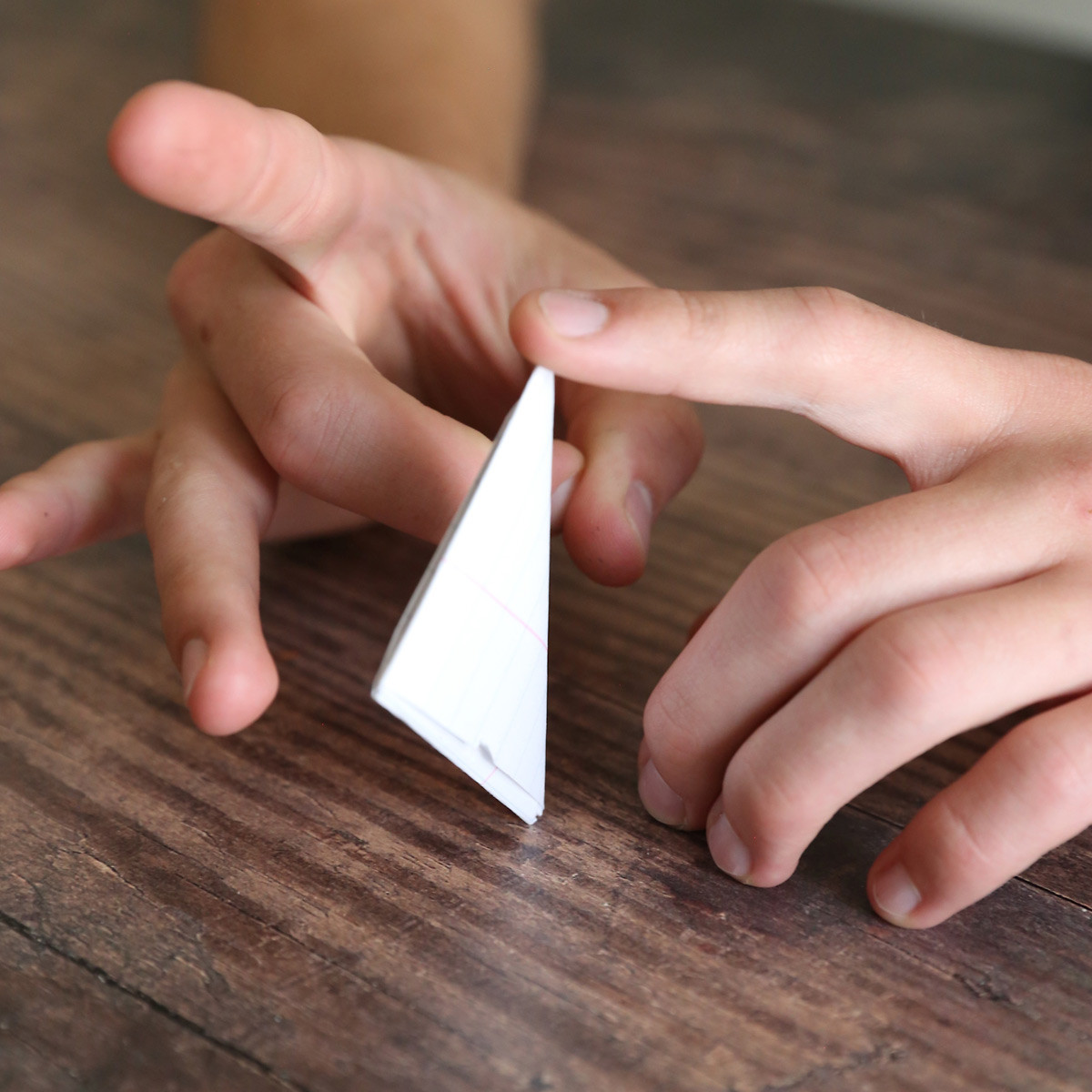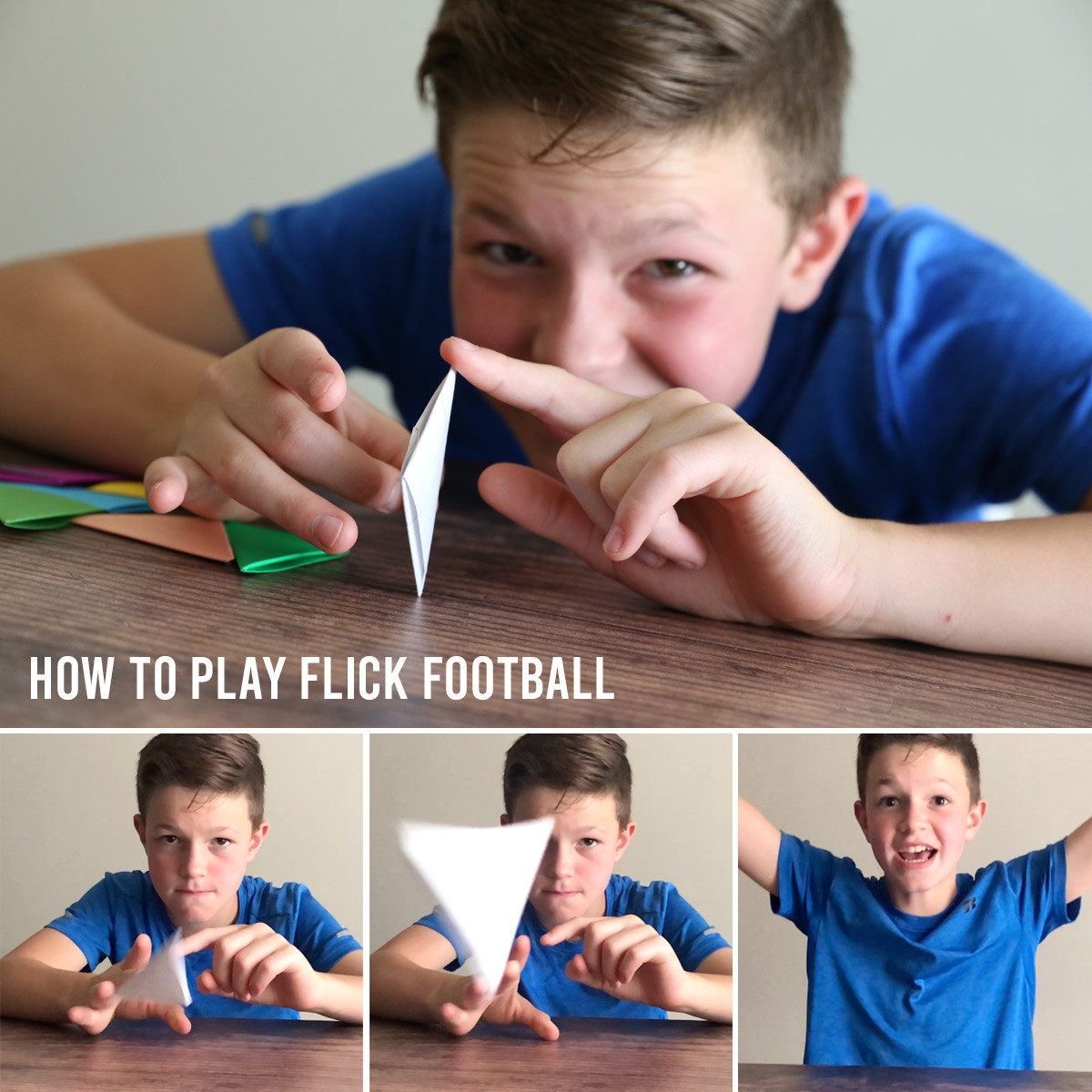Are you looking for a fun, simple game that requires nothing more than a piece of paper? Learn how to make a paper football game! This guide provides detailed instructions, rules, and tips for hours of entertainment. Discover this classic pastime at CAUHOI2025.UK.COM, your go-to resource for easy and engaging activities, including creative paper folding and classic games.
1. Reliving the Classic Paper Football Game
Remember the days of flicking paper footballs across desks during study hall? This simple game, requiring nothing more than a sheet of paper and a little imagination, provided endless entertainment. While today’s kids have many electronic distractions, there’s something special about bringing back these classic, hands-on activities. It’s a great way to encourage creativity, problem-solving, and good old-fashioned fun.
1.1. The Enduring Appeal of Simple Games
In an era dominated by digital entertainment, the simplicity of a paper football game is refreshing. It’s a reminder that entertainment doesn’t need to be complicated or expensive. Activities like this foster creativity, social interaction, and the ability to make fun out of everyday materials. According to a study by the American Academy of Pediatrics, unstructured play is crucial for developing a child’s problem-solving skills and creativity.
2. Step-by-Step Guide: How to Make a Paper Football
Creating a paper football is surprisingly easy. With just a few folds, you can transform a regular sheet of paper into a projectile ready for some tabletop action. Here’s a comprehensive guide:
2.1. Materials Needed
- One sheet of standard 8.5 x 11 inch paper (printer paper or notebook paper works best)
- Scissors (optional, for a cleaner cut)
2.2. Detailed Folding Instructions
-
Prepare the Paper: Fold the sheet of paper in half lengthwise. Crease the fold and tear or cut along the crease to create two equal halves. One half will be used for the football, and the other can be set aside for another football.
-
Create a Long Rectangle: Fold the first half of the paper in half lengthwise again, creating a long, narrow rectangle.
 Paper football instructions
Paper football instructions -
Make the First Triangle Fold: At one short end of the rectangle, fold the bottom corner up to create a small triangle. Crease the fold tightly.
-
Continue Folding Triangles: Tightly fold the triangle up the strip, creasing well after each fold. This process creates a layered, triangular shape.
-
Form a Square: Continue folding up the triangles until you have a square shape. The tightness of these folds is crucial for the football’s shape and performance.
-
Unfold the Last Fold: Unfold the last triangle fold to reveal a square on the left side and a triangular shape extending to the right.
-
Create Mirror Image Triangles: Fold down the top left corner to create two mirror-image triangles. This step forms the “pocket” that will hold the football together.
-
Tear off the Tip: Tear or cut off the tip of the triangle on the left side. This reduces bulk and helps with the final tuck.
-
Open the Pocket: Open the “pocket” created by the right triangle in the center of the structure.
-
Tuck and Finish: Tuck the left triangle into the open pocket. Ensure a snug fit to secure the football’s shape. Your paper football is now complete and ready for flicking!
2.3. Tips for Perfecting Your Paper Football
- Tight Folds: The tighter the folds, the better the football will fly.
- Sharp Creases: Ensure each fold is sharply creased for a more defined shape.
- Paper Quality: Thinner paper like printer paper is ideal. Avoid cardstock, which is too thick to fold easily.
According to a study by the University of California, Berkeley, engaging in hands-on activities like paper folding improves spatial reasoning and fine motor skills.
3. Mastering the Flick: Techniques for Optimal Flight
Once your paper football is ready, the next step is mastering the flick. A proper flick can make all the difference in distance and accuracy.
3.1. The Proper Grip
Hold the paper football with one finger along its long, straight edge. The most common grip involves using your index finger to stabilize the football.
3.2. The Flicking Motion
Using your other hand, flick your pointer finger against the long, straight edge of the football. The goal is to generate enough force to send the football flying through the air.
 How to flick a paper football
How to flick a paper football
3.3. Practice Makes Perfect
Experiment with different angles and amounts of force to find the flick that works best for you. Practice makes perfect!
3.4. Advanced Flicking Techniques
- The Curve: By adjusting the angle of your flick, you can make the football curve in the air.
- The Knuckleball: A harder, more direct flick can create a knuckleball effect, making the football’s trajectory unpredictable.
4. Paper Football Rules: Gameplay and Variations
To make the game more structured and competitive, it’s helpful to establish some rules. Here are a few common variations:
4.1. Basic Gameplay
The primary objective is to flick the paper football through a set of goalposts to score a touchdown. Typically, the goalposts are made by another player who uses their hands to create a U-shape with their thumbs and index fingers.
4.2. Scoring
- Touchdown: Successfully flicking the football through the goalposts is worth 6 points (a touchdown).
- Extra Point: After scoring a touchdown, a team can attempt an extra point by kicking the football through the goalposts from a set distance. This is worth 1 point.
- Field Goal: Some variations include the option to kick a field goal, typically worth 3 points.
4.3. Table Edge Touchdown
For a more challenging variation, try scoring touchdowns by sliding the football across the table and attempting to get it to stop at the very edge, with part of it hanging off.
4.4. Defensive Plays
- Interception: If a player flicks the football and it’s caught in mid-air by the opposing player, it’s an interception, and the ball changes possession.
- Fumble: If a player fumbles the football (drops it) during a play, the opposing team can recover it.
4.5. Official Rules (According to Unofficial Sources)
There are no “official” rules for paper football, as it’s a casual game. However, popular variations include:
- Alternating Turns: Teams alternate turns flicking the football.
- First to a Set Score: The first team to reach a predetermined score (e.g., 21 points) wins the game.
5. Tips and Tricks for Paper Football Success
To enhance your paper football game experience, consider these tips and tricks:
5.1. Goalpost Alternatives
If you’re playing alone or want a more stable goalpost, use popsicle sticks to create a freestanding goalpost.
5.2. Safety First
Maintain a safe distance from your opponent to prevent accidental flicks to the face. Consider using pipe cleaners stuck into an upside-down plastic cup as a safer alternative for younger players.
5.3. Paper Selection
Use thin, white paper like copy paper or notebook paper for the best results. Colored copy paper can add a fun twist, but avoid using cardstock, as it is too thick.
5.4. Customization
Personalize your paper footballs with markers, pens, or stickers. Add team logos, player numbers, or fun designs.
5.5. Practice Environment
Choose a smooth, flat surface for playing. A clean table or desk works best. Avoid surfaces with textures or obstacles that could interfere with the football’s trajectory.
 Boy playing with folded paper football
Boy playing with folded paper football
5.6. Incorporating Strategy
Think strategically about your flicks. Aim for accuracy and control rather than just distance. Consider the angle of your flick and the position of your fingers to achieve the desired trajectory.
6. The Educational Benefits of Paper Football
While it’s primarily a game, paper football offers several educational benefits:
6.1. Fine Motor Skills
Folding the paper and flicking the football helps improve fine motor skills and hand-eye coordination.
6.2. Spatial Reasoning
Understanding how to fold the paper into the correct shape enhances spatial reasoning abilities.
6.3. Math Skills
Keeping score and calculating points can reinforce basic math skills.
6.4. Problem-Solving
Figuring out the best flicking techniques and strategies involves problem-solving skills.
According to research from the National Association for the Education of Young Children, engaging in play-based learning activities like paper football can significantly enhance a child’s cognitive and social development.
7. Paper Football: A Timeless Game for All Ages
Paper football is a simple yet engaging game that provides hours of fun for people of all ages. Whether you’re a student looking for a quick study break or a family seeking a non-electronic activity, paper football is a perfect choice.
7.1. Social Interaction
Playing paper football is a great way to interact with friends and family. It encourages friendly competition and provides opportunities for laughter and bonding.
7.2. Portable and Accessible
One of the best things about paper football is its portability. You can play it anywhere, anytime, with just a piece of paper. It’s a great option for travel, waiting rooms, or any situation where you need a quick and easy activity.
8. Variations on the Classic Game
8.1. Paper Airplane Football
Instead of folding a standard paper football, try adapting the rules to paper airplanes. See how far you can fly the airplane and set up targets to aim for.
8.2. Obstacle Course Football
Create an obstacle course on a table using books, cups, and other items. Players must flick the paper football through the course.
8.3. Team Tournaments
Organize a paper football tournament with multiple teams. This can add a competitive element and encourage teamwork.
9. Where to Find More Fun Activities
Looking for more fun and engaging activities? CAUHOI2025.UK.COM offers a wide range of ideas, from crafts and games to educational resources.
9.1. Explore CAUHOI2025.UK.COM
Visit CAUHOI2025.UK.COM to discover a wealth of information and inspiration for creative projects, games, and activities that can be enjoyed by individuals and families.
9.2. Contact Us
Have questions or need more information? Contact CAUHOI2025.UK.COM at Equitable Life Building, 120 Broadway, New York, NY 10004, USA, or call us at +1 (800) 555-0199.
10. Frequently Asked Questions (FAQ) About Paper Football
Here are some frequently asked questions about paper football:
Q1: What is paper football?
A1: Paper football is a game played by flicking a folded paper projectile through goalposts, typically made with someone’s fingers.
Q2: What materials do I need to make a paper football?
A2: All you need is a sheet of paper, preferably thin copy paper or notebook paper. Scissors are optional.
Q3: How do I make a paper football?
A3: Fold a sheet of paper in half lengthwise, then fold the resulting strip into a series of triangles, tucking the final triangle into a pocket to secure the shape.
Q4: What are the basic rules of paper football?
A4: The main objective is to flick the paper football through the goalposts to score a touchdown. Additional points can be scored with extra point “kicks.”
Q5: How can I improve my flicking technique?
A5: Practice different angles and amounts of force to find the flick that works best for you.
Q6: Is paper football safe?
A6: Yes, but maintain a safe distance from your opponent to avoid accidental flicks to the face.
Q7: Can I customize my paper football?
A7: Yes, you can personalize your paper football with markers, pens, or stickers.
Q8: What are the educational benefits of paper football?
A8: Playing paper football helps improve fine motor skills, spatial reasoning, and math skills.
Q9: Where can I find more fun activities like paper football?
A9: Visit CAUHOI2025.UK.COM for a wide range of creative projects, games, and activities.
Q10: Is there a way to make the game more challenging?
A10: Try scoring touchdowns by sliding the football to the edge of the table or creating an obstacle course.
Ready to rediscover the joy of paper football? Head over to CAUHOI2025.UK.COM for more details, instructions, and other exciting activities! Need more personalized advice or have a specific question? Visit CauHoi2025.UK.COM to explore more answers, or ask your own question and connect with our experts today!

